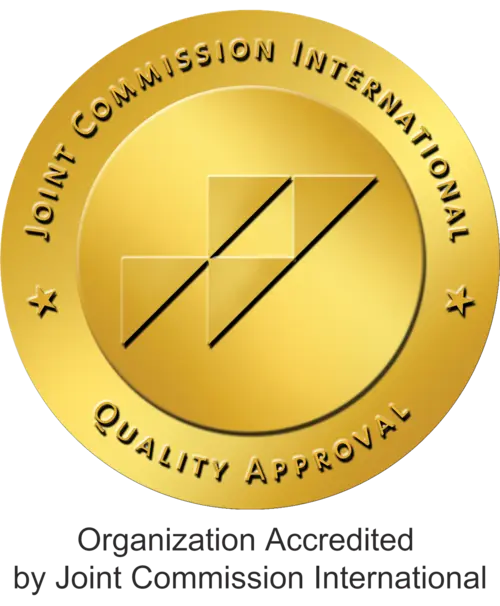Sleep Disorders in Children and Adolescents
Sleep Disorders in Children and Adolescents
Sleep, one of the most basic needs of man, is very important in the development of attention and learning processes in the brain. It is a special form of mental activity. It is an active and neuronal process. There are special areas in the brain related to the initiation and maintenance of sleep. Although it is important in every period of life, it gains even more importance in infancy and childhood, especially when brain development and growth is the fastest. It is difficult to describe a normal sleep. Because the sleep-wake cycle varies according to age, gender, light-dark state, exercise status, stress, and diseases. Sleep is a normal sleep that makes you feel physically and spiritually ready while resting.
In the first years of life, most of the day is asleep. Newborn babies sleep an average of 14 - 16 hours a day. Since they sleep both day and night, the concept of night sleep is not fully present. Around the age of 1, the concept of night sleep begins to become clear. The need for daytime sleep ends at around 3 years of age. Morning sleep does not continue after 1 to 2 years of age. As the age grows, the body's need for sleep decreases and sleep times (8 - 10 hours) as adults.
There can be many different causes of underlying sleep disorders. The most common problems that arise from parents' attitudes and boundary problems, which can be easily resolved when seeking help. Many mental illnesses (depression, anxiety, attention deficit hyperactivity disorder, autism spectrum disorders, etc.) can be accompanied by sleep disorders. Even if there is no mental illness, one of the most common reactions to stressful events is sleep disorders. Also, sleep disorders are observed due to medical diseases (gastroesophageal reflux, pain, allergies, asthma, etc.).
Sleep disorders can lead to learning, attention and memory problems, irritability, daytime sleepiness, and mental illnesses, especially in prolonged sleep disorders. It is very important to eliminate these problems in childhood when brain development is very fast.
Approximately 20-30% of children experience sleep disorders.
MOST COMMON SLEEP DISORDERS
NIGHTMARE
The most common age group is 3 - 5 years old. But it can happen in any period of life. It usually occurs late in the night, as it is more common in the second half of sleep. It can be more frequent in periods when stress and anxiety increase. There is no specific treatment. It is important to investigate and treat the underlying causes. It may increase in children after exposure to cartoons or video games containing inappropriate fear. It may also increase after stress and anxiety periods.
NIGHT / SLEEP TERROR
It is common between the ages of 1.5 and 10. The incidence of pre-school children seen at 40%. It happens early in the night because it is in the first half of sleep. 2-3 hours after the child sleeps, he sits in his bed, shouting or crying in fear. His eyes are open, but the eyes are empty and dull. The duration can vary from 30 seconds to 3 minutes. In the morning, the child does not remember it or remembers it very little (if he is not awakened) because it is in the heavy part of sleep. Daytime sleep can be recommended as it can increase when he is very tired. Programmed wake-up can also sometimes work. Differential diagnosis is important when it starts during adolescence.
sleepwalking
Its incidence in children is 15%. It most commonly starts between the ages of 4 and 8, decreases towards puberty. Repetitive are periods of getting up and wandering during sleep. The eyes are still open and motionless, the eyes are dull. Again, it is not remembered in the morning or very little as it is in the period of heavy sleep. In addition to walking, actions such as going out the door or urinating to the wrong place can also be seen. It is very important to take home safety measures. Although it benefits from sleep hygiene and programmed awakening, the problem should be solved by getting professional help.
MOVEMENT DISORDER IN SLEEP
When we normally dream, all of our muscles are paralyzed except the respiratory and eye muscles. These individuals do not have this paralysis, which is normal during the dream. And the person moves while dreaming. He can kick, hit the person nearby. This condition can be confused with other sleep disorders or epilepsy. treatment can be benefit from it.
Sleep Apnea Syndrome
During sleep, complete interruption of the person's breathing is called an apnea and partial interruption is called a hypopnea. It may result from the brain or respiratory tract. It is a very serious status since the oxygenation of the brain is disturbed in long apnea. Generally, individuals with this disease complain of snoring during night sleep and tired waking and sleepiness during the day.
Restless legs syndrome
It is manifested by restlessness, desire to move, chills, tingling, burning, itching, or pain in the legs, which appear at rest in the evening. In mild ones, this feeling of restlessness disappears with movement. Leg movements also occur during sleep. Control of symptoms and treatment of underlying diseases is important.
Narcolepsy
it happens in children and adolescents, it usually manifests with excessive, uncontrollable daytime sleepiness. Patients suddenly fall asleep while talking or eating unexpectedly. This sleep may take hours. The second symptom is a sudden loss of muscle strength that occurs when there is a strong feeling (excitement, sadness, happiness) or while laughing. This condition called “cataplexy” is seen in 50-70% of narcolepsy cases in children. In some of the cases, sleep paralysis and hallucinations can occur during sleep. It is caused by a lack of nerve cells that provide alertness in the brain. It is clarified by special sleep tests for its diagnosis and analysis of a special substance produced by sleep cells in the cerebrospinal fluid. treatment can be benefit from it.
SLEEPADIAN RHYTHM (24 HOURS ORDER) SLEEP - WAKE DISORDERS
The 24-hour sleep-wake cycle is called the "circadian rhythm". It varies according to age, gender, light-dark condition, exercise status, stress, and diseases. It is a sleep disorder especially seen in adolescents. While the need for physiological sleep increases in adolescents parallel to academic life, sleep time patterns change due to increasing social activities. At the same time, the hormone melatonin released at the beginning of sleep begins to be released later. For all these reasons, the phase delay is observed in the circadian rhythm of adolescents. This sleep disorder can also be seen on long journeys and shift workers.
Bruxism
It is a condition of grinding teeth during sleep. It can be seen at any age. It causes abrasion in jaw joints and teeth. In order to prevent abrasion in the teeth, a personalized mouth apparatus should be used. It can cause headaches due to pressure. It is recommended to investigate and eliminate the underlying causes (stress etc.).




